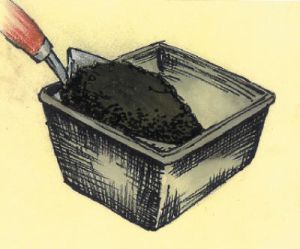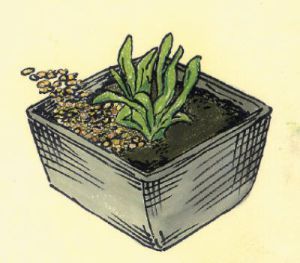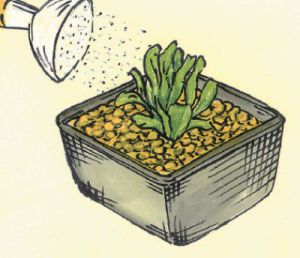Step 1 - Preparing the basket
When choosing the basket size consider the ultimate size and height of the pond plant - Tall marginals will need larger baskets to counter balance them and avoid being blown over. Line the mesh aquatic basket with a hessian or foam liner - Fine Mesh baskets do not need to be lined although it is beneficial.

Step 2 - Part fill the aquatic basket
Fill the aquatic mesh plant basket about two thirds full with aquatic soil. Create a hole in the soil larger enough for the root ball. Then to remove the plant from it original pot gently loosen any roots protruding from the base and gently tap the base to realise so it lifts out easily

Step 3 - Planting the aquatic plant
Gently loosen the root ball and then place into the prepared basket. Now surround the plant roots with the soil and top the basket up to about 4cm from the top with more soil, Remembering you will need to top the basket off later with gravel.

Step 4 - Water in the pond plant
Gently water in the plant so the soil gradually dampens down to become saturated.

Step 5 - Topping off the pond basket
If the soil reduces down below about 6cm, top the basket up slightly with soil. Taking care not to damage the plant or bury the leaf's. Then cover the soil a layer of aquatic gravel (DO NOT use limestone gravel).

Step 6 - Positioning the plant
Water in the plant again. and then gently lower the plant into its final position. Some water lilies will need to be lowered to their final position over a period of a few weeks.

Guide to pond plant depth

Pond planting zones - Check individual plant requirements
Bog Plants:
Damp moist soil above the water level
Marginal Pond Plants:
0cm to 15 cms deep
Water Lillie's & Deep Water
- Small Water lilies 30-60 cms deep
- Medium Water Lilies 30-90 cms deep
- Large Water lilies 30-150 cms deep
- Deep Water Plants 10-100 cms deep
Oxygenating Pond Plants
- Bunched - Anchor down up to 100 cms
- Planted - 15 cms deep to 0 cms
Floating Plants:
As the name suggests these plants float on the water surface
 British Pounds
British Pounds

